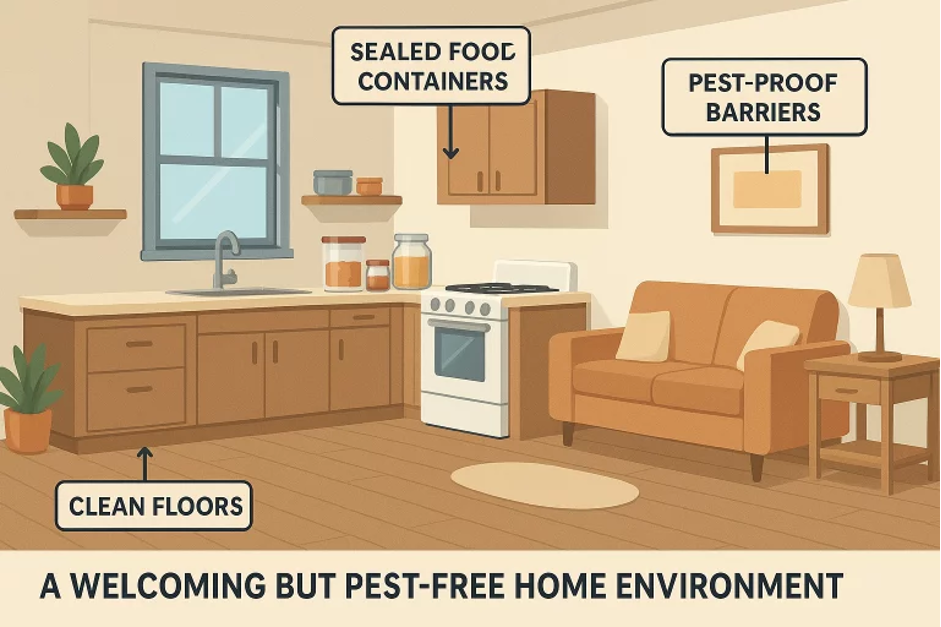Introduction
Household pests are more than just an occasional nuisance—they present significant risks to the safety, health, and comfort of your family. These unwelcome invaders can introduce harmful bacteria, trigger allergies, and even cause structural damage to your property. Additionally, the presence of pests can undermine your peace of mind, making your home feel less like a sanctuary and more like a battleground. Fortunately, maintaining a pest-free home is achievable through a proactive combination of preventative measures, regular maintenance, and expert guidance. By implementing proven pest management techniques and leveraging professional support, especially in regions known for challenging infestations, you can effectively protect your home’s value and your family’s well-being. For those in South Carolina facing ongoing pest issues, consulting a reputable local expert, such as pest control Columbia, SC, equips you with both immediate and long-term solutions tailored to your local environment.
Successfully minimizing pest infestations is not a matter of chance; instead, it requires a structured, multi-faceted approach. By systematically addressing your home’s most vulnerable areas and consistently applying best practices, you can significantly reduce the risk of pest invasions. The following guide provides a detailed exploration of the most effective strategies for making your home unattractive to insects, rodents, and other household pests throughout the year.
Seal Entry Points
Pests are incredibly resourceful and can exploit even the tiniest openings to find their way indoors. Begin your defense by performing a thorough exterior inspection of your property, looking for cracks, holes, or unsealed joints along the foundation, siding, and roofline. Use long-lasting caulk for narrow cracks, foam sealant for larger openings, and reinforce vulnerable areas with durable hardware cloth as needed. According to the CDC guidelines on rodent prevention, it is essential to seal all gaps and entry points, including those around utility penetrations (pipes, wires), door and window frames, and junctions where different building materials meet, to block rodents and other pests effectively. Weatherstripping doors and repairing window screens further strengthens your home’s barrier, making it much harder for pests like mice, cockroaches, and ants to gain a foothold. Even termites, which may go undetected for years, often enter through small cracks in the foundation or around utility access points, underlining the importance of a comprehensive sealing effort.
Critical Areas to Inspect and Seal:
- Gaps surrounding utility pipes and wires entering the home’s walls
- Spaces under exterior doors, including garage thresholds
- Openings around attic and dryer vents, and chimneys
- Basement windows and crawlspace entries that may have cracked glass or missing seals
Consistently addressing these structural vulnerabilities is one of the most effective, long-term methods for keeping pests of all kinds outside where they belong.
Maintain Cleanliness
Maintaining cleanliness is one of the most effective ways to keep pests out of your home, as it removes the food, water, and shelter they seek. Regularly sweeping and vacuuming floors, particularly in the kitchen and dining areas, helps eliminate crumbs that attract insects and rodents. Daily wiping of countertops, tables, and cooking surfaces ensures grease and spills don’t become pest magnets. Sealing and frequently emptying trash and recycling bins also helps prevent odors that draw in unwanted visitors. Don’t overlook cleaning hidden areas, such as beneath appliances and inside pantries, where pests often nest. Decluttering, mainly by removing cardboard and paper stacks, eliminates potential hiding and nesting spots. A consistent cleaning routine is your most vigorous and simplest defense against infestation.

Control Moisture
Moisture is a primary attractant for many pests. Areas of standing water, dripping pipes, or excessive humidity can quickly draw cockroaches, termites, silverfish, earwigs, and other destructive organisms. Addressing both evident and hidden sources of moisture is critical for pest control and also benefits your home’s structural integrity. According to the U.S. Environmental Protection Agency, key steps to control moisture include promptly fixing leaks, improving ventilation, and using dehumidifiers in damp spaces—practices that can significantly reduce the appeal of your home to pests.
Moisture Reduction Best Practices:
- Promptly repair leaking pipes, faulty faucets, and deteriorating caulk around sinks and baths
- Ensure all gutters and downspouts direct water well away from your home’s base to avoid foundation saturation
- Use dehumidifiers in damp areas like basements, and make sure attics and crawl spaces are well-ventilated
- Install high-quality exhaust fans in bathrooms and kitchens to expel excess steam and humidity
- Check under sinks, around water heaters, and in laundry rooms for condensation or undetected leaks
Keeping your home dry will not only deter pests but also help prevent mold and costly water damage, enhancing the overall durability and comfort of your living space.
Proper Food Storage
Proper food storage is essential for preventing pest infestations. Pests are drawn to exposed or poorly stored food, including pet food and pantry items. To reduce their attraction, store dry goods in airtight containers, refrigerate perishables, clean up pet food promptly, and seal leftovers. Regularly clean spills, crumbs, and inspect for signs of pests to maintain a hygienic, pest-resistant kitchen and pantry.
Conclusion
In conclusion, protecting your home from pests requires a deliberate and ongoing effort, but it pays off in comfort, safety, and peace of mind. By sealing entry points, maintaining a high standard of cleanliness, controlling indoor moisture, and storing food properly, you create an environment that is far less inviting to unwanted intruders. These strategies not only help prevent infestations but also support a healthier, more resilient home overall. With consistent upkeep and, when needed, professional pest control services tailored to your local conditions, you can confidently maintain a pest-free household all year long.
Lynn Martelli is an editor at Readability. She received her MFA in Creative Writing from Antioch University and has worked as an editor for over 10 years. Lynn has edited a wide variety of books, including fiction, non-fiction, memoirs, and more. In her free time, Lynn enjoys reading, writing, and spending time with her family and friends.















